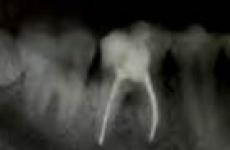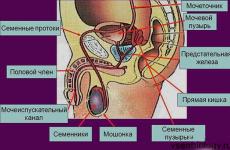How to plane wide boards with a narrow plane. Electric planer - description and working methods. Included with electric planer
A plane is a traditional carpenter's tool, a kind of symbol of this profession. The shape of the instrument and the methods of working with it, despite its technical improvement over many years, have not essentially changed.
In order for the process of planing a wooden workpiece to proceed “without a hitch” (as evidenced by twisted shavings freely coming out of the slot in the plane block), it is necessary to accurately adjust the plane knife and correctly move the plane along the surface being planed.
Planing is a real pleasure when using a planer thin and long twisted chips fly out.

Fixing the knife in the vice of the workbench plane with exposed chipbreaker, lightly tighten the screw. After wedging is fixed with a chipbreaker itself due to its springiness.

Insert the knife into the tap hole of the plane and at first they only secure it by hand wedge in its guides.

To determine, is it set correctly? knife (its blade should be parallel sole plane planer and protrude slightly over her), you just need turn the plane over and evaluate mutual blade parallelism knife and sole by eye. To adjust (if necessary) position knife, release the wedge, align the knife correctly and fix it again wedge
When planing the faces of workpieces, the knife should remove chips of uniform thickness. To do this, you need to adjust the chipbreaker of a jointer, a double plane (with a double blade) or a sander. The chipbreaker performs the function corresponding to its name and should be installed slightly above (about 1 mm) the knife blade and fit snugly against it.
First, the knife with the chipbreaker fixed on it is inserted into the slot (tap) of the block (body) and slightly wedged. Then set the knife with light blows of the hammer so that its blade is parallel to the sole of the plane and protrudes slightly above it. After this, the knife is finally fixed in the block with a wedge, screw or cam clamp (depending on the design of the plane).
Since when planing top part If the body of the worker makes movements together with the plane, then the carpenter should stand on the side parallel to the workpiece being processed, with one leg placed forward. To prevent the plane from tipping over at the beginning and end of the workpiece (then the surface being processed in these areas will be uneven), you should lean harder first on its front handle, and then on the back handle at the exit.
PRECISION PLANE

In modern planes with a metal block, the blade is usually secured with a screw. With another screw (set screw), you can adjust the plane to the required thickness of the chips being removed with an accuracy of hundredths of a millimeter. In addition, such planes are equipped with a so-called blade tilt regulator, which allows you to quickly, just press thumb hands on the corresponding lever to correctly position the knife blade relative to the sole of the plane.
EDGE PLANING
When planing the edges of flat workpieces, you should move the plane along an even path along the entire length of the workpiece, leaning evenly on it. In this case, the knife must be secured securely so that it does not vibrate in the block. In addition, you should avoid tearing the chips by cutting in the direction of the wood grain. When processing wood pieces with thin and irregular texture (for example, root), the knife must be sharpened very well. When planing, such a workpiece should be constantly rotated.

It is more convenient to trim a narrow edge using, for example, a piece of board, pressed against the workpiece, or planing simultaneously edges of several thin boards collected in a package. In this case the supporting surface increases for the sole of the plane.

To prevent the edge from becoming rounded, The plane must be held level, without tilting in any direction.

Sherhebel can be removed in one pass thicker layer of material.

The end of the workpiece will be planed much easier if you hold a plane at an angle to the workpiece faces.

Wide wooden overlays, attached with a clamp to both edges of the workpiece, eliminating chipping when processing the end.

The workpieces are not plated long length turn out very smooth with a silky shine after processing only with a sander.

When planing layers it is necessary constantly check with steel processed with a square surface.

When processing long workpieces has proven itself best a jointer that can even plan towards the fibers.
PLANING PLATES
To make a rough but even surface smooth, it is enough to treat it with a sander (a tool with a knife angle increased to 60° for fine planing of hard-to-cut wood) and a jointer. To eliminate unevenness or remove a thicker layer, treatment with Sherhebel will be required. The latter is equipped with a narrow (33 mm wide) convex knife with an oval blade, capable of removing chips up to 3 mm thick in one pass. After this, the surface must be leveled with a sander and “smoothed” with a jointer.
CLEANING THE ENDS
When cleaning the ends of the workpieces, the plane is driven in the direction “away from you”, making short pushes with it. In this case, the wood fibers are cut crosswise, which requires somewhat greater effort and the use of very sharp knife. To avoid chipping at the edge in the direction in which the end of the workpiece is being machined, you can first chamfer this edge. It’s better to first process one half of the end to the middle, and then, turning the workpiece 180°, the second half.
More than during operation, the blades deteriorate from contact with foreign objects when the plane is not used. During breaks in work, the plane should be placed on its side or with the front part of the sole on wooden stand. During long-term storage or when transporting the plane in a tool box, the knife should be placed inside the block.
Hello everybody! Let's talk about the electric planer today. If you use it correctly, you will ensure high quality of the treated surface and will not allow the tool to cause injury to you. So, in this article we will look at the question of how to properly use an electric plane.
80 types of electric planers at low prices. Click to see
Sharpening knives and installing them
In order for the treated surface to be smooth and clean, it is necessary to use an electric planer with well-sharpened and correctly aligned knives, and it is also necessary to set the correct planing depth and move it correctly along the surface.
Use a plane with with dull knives It’s stupid, because, firstly, the surface will turn out to be rough and sloppy, and secondly, in this case the engine will receive excessive load, which will lead to its premature wear. Knives can be sharpened, or they can simply be thrown away after becoming dull, and new ones are put in their place - this applies to thin knives, which are now used on most modern electric planers. Unsharpenable and many sharpened blades have two sharp sides, which allows you to use the other after dulling one side. Naturally, one-sided knives cannot be turned over.
It is better to entrust sharpening to specialists in special workshops, of which there are usually plenty in cities, since this requires special equipment. However, there are craftsmen who sharpen knives themselves with the help of household sharpeners - the most important thing here is that your eyes do not fail to see the smallest irregularities, as well as your hands, so as not to make unnecessary such irregularities. But it’s still better to contact a special service, since this procedure is inexpensive.
Now about installing the knives. Using an electric planer with blades that are not aligned correctly can be hazardous to your health and can also lead to unpleasant results on the treated surface. They can be attached differently on different models. It is better to find out how to replace it in the instructions. After installation, the knife should stick out evenly from the drum without distortion. How far it should stick out of the drum can be determined using a ruler. After installation, we set a certain planing depth, and then apply the ruler to the knife with the end side so that it is parallel to the front sole of the plane. Now you can use the second ruler to measure the distance between the front sole and the first ruler. It must coincide with the set planing depth.
After installing the blades, make sure that they do not touch the body by rotating the drum with your hands. And all work, of course, must be carried out with the plug unplugged.
Surface treatment
When planing, you should follow a number of simple rules that will allow you to achieve the best result.
The workpiece to be processed should be securely secured so that it does not dangle during planing. If you are going to use a plane to process large and heavy beams or boards, then the main thing is that they lie on a fairly flat surface, and there is no need to secure them in any way, since they are already heavy and will not run away anywhere.
Before applying the plane to the workpiece, it should first be turned on and allowed to reach full speed in the air, and only then can you begin to remove chips. It is advisable to drive it along the surface without jerking or stopping at a speed of 1.5-2 m per minute. If you work at such a speed, it is ensured best quality processing.
What depth to set depends on how uneven the surface being treated is. It happens that at sawmills, timber or boards are sawed so that the surface turns out to be waves. It is better to first go through such surfaces with the maximum planing depth set, and then process it at a lower level. In this case, not one pass, but several may be required.
You need to use the plane so that the pressure during planing is applied evenly over the entire sole. However, when you just bring it to the edge of the surface to be treated, you should press a little harder on the front part. And when it reaches the end, you should press harder on the back. This will prevent the formation of debris along the edges of the board or timber. The pressing force can only be determined experimentally.
It happens that when planing there are differences between adjacent passes. It is possible to prevent their occurrence, as well as to correct them if they do appear, only with the acquisition of some experience. If such differences appear, they can be removed by running a plane with the minimum planing depth set. In this case, you should work so that there is no strong pressure on the tool.
If your device supports the quarter removal function and you decide to use it, then you should do the following. First, you will need to install the included side stop. This is done according to the instructions, different models the fastening can be arranged in your own way. Then you should make sure that the side of the board on which you will remove the quarter is smooth and does not have differences. If it is uneven, then the side stop passing along it will repeat this unevenness, and the quarter will be removed crookedly.
When working to remove the quarter, be sure to apply pressure to the tool from both the top and the side. Sometimes, forgetting to tighten the plane on the side, it moves towards the edge, and the quarter is again removed unevenly.
How to use an electric plane safely
When working with a plane, you should follow some safety rules that will protect your body from injury.
Naturally, before work, you need to make sure that the insulation on the power supply cord of the electric planer is in good condition. If the wires are exposed or cracked, the wire must be replaced. Do not use a tool with damaged wires.
It was also mentioned above that switching must be done before its sole comes into contact with the workpiece. And only after it reaches full speed should it be brought to a wooden surface. Also, after releasing the planer power button, you should wait until the drum stops completely, and only then put it down.
A plane connected to the network, but left idle for a while, should be placed on its side so that if it is turned on unintentionally, it cannot move anywhere.
These are the features of using a plane. I hope you found the article useful. See you!
Planing with an electric planer is a fairly easy process if you have at least some minimal knowledge. But things are different if you need to process a very wide board.
After all, not everyone can do this efficiently, but it is necessary that the layer is removed evenly from the surface of the board, and no processing boundaries are visible.
Instructions for planing with an electric planer
Before processing a wide board with an electric planer, first experiment on a piece that you do not need.
Note that the electric planer can operate in two modes: stationary and manual.
If you use stationary mode, then the board is passed through the knives of an electric planer.
Manual mode requires special settings for the electric planer. First you need to adjust the cutting depth of the knives. Usually they set it to 0.1-0.4 cm. The shallower the planing depth, the better the processing of the material will be, and you will practically not notice the boundaries between passes. If it is necessary to perform deep planing of a board, then first set the maximum cutting depth of the knives, make the first pass, and then the knives are reconfigured for better planing.
When you work with an electric planer a couple of times, you will learn to select the correct depth of cut, and the work process will noticeably speed up.
We process wood: what do you need to know?
Before processing lumber, you need to determine the direction in which you will plan. Usually planed in the direction of the wood grain. If the lumber is made from several boards, then you need to plan it diagonally.
To prevent the edge of the board from becoming uneven, you need to use a corner stop, which is attached to the base of the electric planer on the side and perpendicular to its axis.
When you have finished planing the wide board, you will need to align the boundaries between the passes. This stage is called scraping. For this, a special grinder is used, which will remove all roughness.
An electric planer makes it easier manual labor, with its help the result is high-quality and achieved quickly. An electric planer will be useful to anyone involved in wood processing. It will definitely help with repairs and construction if wood is used. The fast-rotating knives of the tool will remove chips of the required thickness from the workpiece and bring the workpiece to required sizes, will make the edges smooth and even, chamfer or make a large bevel, select a rebate.
The power tool must be guided along the workpiece without exerting significant effort, which is necessary when working with a conventional plane. The surface is processed in accordance with the settings; the quality does not depend so much on inaccurate operator actions.
What are there
On sale you can find household and professional (semi-professional) electric planers. They differ from each other in color and markings. The first ones are cheap and light. The second ones are more expensive, more powerful and heavier. Their motor life is many times greater; they can do work every day for many hours.
As a rule, in everyday life there is no such need; an electric planer is used from time to time, so purchasing a household model for your home, but from famous manufacturer, is the usual solution.
The processing width in one pass for household models is usually 82 mm; less common are models with knife lengths (knives are positioned horizontally) of 100 mm and 110 mm. Professional models may have more.
The tool bed is divided into two parts - the front, adjustable, which rests on the workpiece in front of the knives, and the back, which rests on the already processed wood. 
On the front of the bed there is a longitudinal recess (several recesses various sizes), into which you can hang the edge of the workpiece when chamfering, which will allow you to chamfer most accurately.
On the front handle there is usually a regulator for the thickness of the removed chips (depth of cut).
Another important component is the chip removal system. When planing, it forms significant amount shavings. The planer has a pipe into which dust and chips are thrown out during operation. 
An industrial vacuum cleaner can be connected to the pipe. But you can also connect a bag to collect shavings so as not to litter the room with them.
Some models of electric planers are equipped with such a bag. But you can do it for any model yourself.
How to make a chip bag? You will need a spare tube from the vacuum cleaner, which connects to the nozzle of the plane. And also a piece of fabric, a zipper sewn into the fabric to remove shavings, and a crimp clamp to secure the neck of the bag to the tube.

Some models are equipped with side and top stops, which allow you to guide the plane along the edge of the workpiece at a certain distance from it and to a certain planing depth. This allows you to select folds.
Some expensive, powerful models are equipped with a planer-thicknesser device or a simpler frame, with which the plane can be secured with the knives up, thus obtaining a small planer (thicknesser).
How to replace knives
The electric planer is equipped with knives made of high-strength, abrasion-resistant alloys.
If the knives begin to leave a mark on the wood, this indicates they are damaged and need to be replaced. 
A knife, as a rule, has two sharp edges, and if one is dull, then you just need to turn the knife over.
To replace knives, you must first disconnect the electric planer from the power supply. Then you need to unscrew the screws securing the knife holders and remove the holders from the groove, and then remove the knives from them.
By inserting new knives into the holders (turning the existing ones over), you can reassemble in the reverse order 
It is important to set the knives in height, which is not easy and requires effort.
The position of the knives is adjusted with the screws of the knife holders. The cutting edges must be aligned exactly to the level of the rear fixed sole of the electric planer along their entire length. Those. must be in the plane of this sole. 
Alignment of electric planer knives is performed in the following order.
A ruler is placed on the edge of the fixed part of the sole. Then the knives are turned slowly. The edge of the knife should not lift the ruler, but only lightly touch it. This should happen along the entire length of the knife - when the ruler moves along the width of the sole. 
The operation of setting the knives in height is carried out several times using a ruler until the best result is achieved.
But it is possible for the knives to move due to centrifugal forces during rotation. Therefore, after aligning the knives along the ruler, the plane is turned on and kept at idle for about 20 seconds, after which the position of the knives is again checked and, if necessary, adjusted. The position of the knives is periodically checked during operation.
Features of working with an electric planer
The force of movement (feed) of the plane over the workpiece must be such that the speed of rotation of the knives does not change
The quality of processing will be high if the movement of the plane along the workpiece is smooth, slow enough so that there is no significant slowdown in the rotation of the knives.
Processing begins after the engine and blades have reached nominal idle speed.
The workpiece must be firmly secured to the workbench or its stop must be strong.

Chips from the workpiece should be removed promptly. It is important that the chips do not fall under the sole of the plane; this must be constantly monitored.
Planing usually begins from the end of the workpiece, the front part of the sole of the plane is placed on the workpiece, then the plane is moved forward along the workpiece with a smooth movement.
When the knives enter the workpiece and come off, the plane is pressed against the workpiece with increased force to prevent the occurrence of unplaned areas along the edges of the workpiece.
To obtain high quality and uniform processing, longer workpieces are used than required. After planing, the ends of the workpiece are cut off.

Professional electric planers can be converted using a planer-thicknesser device into a stationary wood planer. The electric planer is installed on the frame with the knives facing up, which are covered with a protective curtain. It is important that on this machine you can set required dimensions parts and use them to make several parts from different-sized blanks. At the same time, the accuracy of right angles and the cleanliness of processing remain quite high.
The work is performed as follows. All workpieces are processed on one face. Then the machine is reconfigured and the next face is processed on all workpieces, etc. For endurance right angle, the workpiece is firmly pressed against the side stop of the device. When working, you should not approach the plane and follow the workpiece; you should feed it, intercepting it in your hands. 
Processing difficult places

When choosing an electric planer, you need to pay attention to whether it is equipped with stops or the possibility of purchasing them additionally and using them with this model.
Electric planers, which have been on the market since the mid-20th century, have become indispensable for craftsmen processing lumber. Their popularity is due to the presence of a number of advantages compared to conventional hand planes. When using power tools, the labor intensity of the process is reduced, labor productivity increases, and the quality of workpiece processing is improved. In addition to planing, specialists perform quarter cutting, chamfering and other operations using tools. To achieve a high-quality result, you need to know how to operate an electric planer correctly and follow safety rules.
An electric planer purchased recently or used for the first time in practice needs to be checked.
It is not recommended to start operating the mechanism without preparation, because this can lead to its breakage or damage to wooden blanks.
First you should familiarize yourself with operating instructions. Next they carry out preliminary preparation, checking:
- position of the front part of the sole;
- degree of freedom of rotation of the working drum with cutting elements fixed on it;
- Availability various damages plugs, power cord, housing;
- freedom of movement of the power button;
- correct placement of knives.
The functionality and configuration of the electric planer must be checked at the time of purchase. The rotation of the drum is checked by moving it with your hand. The button operates by pressing it. The integrity of the unit is determined visually. When no defects are found, a test run of the equipment can be performed.
Before planing with an electric planer or performing other operations with it, it is recommended to first practice processing on unnecessary boards or bars. This will allow you to “get your teeth into” and adapt to the technique in order to get an acceptable result in the absence of the necessary practical experience.
If the tool is turned on and begins to vibrate or when working, low quality processing boards (waves and burrs appear on the surface of the wood), then you should sharpen or replace the knives on the drum.
Setting the correct position of the front of the plate
It is recommended to start setting up the electric planer by adjusting the position of the front part of the stove with the plug unplugged. For this you will need use a ruler or suitable size a piece of ordinary glass. All actions are performed in this sequence.
- Using a special adjusting handle, the front (movable) part of the sole is set to a position that ensures minimum depth when planing.
- Place the power tool on a level workbench or work table in an inverted position.
- The drum is rotated so that one of the knives is located above its axis.
- A ruler or glass is placed on the sole: they must lie in the same plane.

When the overlay on the slab is tilted, this defect is eliminated as follows:
- remove the adjustment handle and the front part of the sole;
- clean the opened cavity from chips and dust;
- lubricate the mechanism;
- put the stove in its original place;
- install the handle;
- Check the position of the sole using a ruler.
The adjustment is considered complete when the glass or ruler is located in the same plane with the sole.
Checking the installation of knives
Blade installation is checked using metal ruler. To do this, it is applied to the edge of the slab. Then they look to see if the blades located on the drum touch the ruler. When the knives do not come into contact with the ends of the lining, begin to regulate them. Using the hex wrench supplied with the power tool, loosen the blades on the drum. Then the cutting edge of the knife is set parallel to the sole so that it protrudes about 0.5 mm for straight models and 1 mm (or more) for rounded ones.

Using the described method, the position of the blades is adjusted for models with both one knife and two or three. After completing the regulatory adjustments, they will be installed in the desired position.
It must be taken into account that the depth of planing and the ease of movement of the tool depend on the protrusion of the knife above the sole.
When setting the correct position of the blades, they should not touch the sole when the drum rotates.
Possible working positions of the electric planer
Some models of electric planes include support stand. This makes it possible to perform work using this device in two ways:
- placing it in a stationary position, when the power tool is fixed motionless (rigidly) to the workbench or table;
- using an electric planer as portable equipment.
In the latter case, the tool moves along the machined surface. This makes it convenient to process long pieces of wood.

Electric planer with stand included
A rigidly fixed tool is, in fact, planing machine. The wooden blank is moved along it, pressing it with sufficient force. At the same time, it is convenient to perform work operations with the help of a partner. You can work with short-length lumber alone.
The easiest way to prepare an electric planer for work is to turn to specialists for help to the service center. Self-tuning of the tool should be carried out according to the recommendations set out in the manufacturer’s instructions.
Performing various types of work with an electric planer
Electric planers can be used to perform various operations:
- plan wide or narrow boards, as well as other wooden blanks;
- choose quarters;
- remove the chamfer.
Before carrying out work, you should select lumber of proper quality:
- without knots;
- well dried;
- without cavities filled with resin, chips and cracks (longitudinal or transverse);
- With flat surface, not containing depressions or protrusions;
- There should be no metal inclusions in the board or timber: nails, screws, bolts, brackets, screws, staples and others.
When using a portable method of using an electric planer, the workpiece is securely fixed on a hard surface. To do this, install at least 2 stops, but it is better to place them on all sides of the part. They also ensure free movement of the power cord so that it does not get caught. The safety of the operator partly depends on this.
Cutting a quarter using an electric planer
Selecting a quarter (removing a fold) is one of the operations performed using an electric planer. To complete it you need installation of two stops:
- the first (top), which controls the movement of the tool along the workpiece in the desired direction;
- the second (lateral), which determines the depth of the quarter sampling.

The stops are adjusted to the required dimensions, following the instructions in the operating instructions for the product used. In this case, the distances are measured by focusing on the cutting edge of the blade, which occupies the upper position.
There are two ways to select a quarter:
- moving an electric plane along the workpiece;
- moving the processed wooden part on a homemade machine.
In any case, the movement of the power tool or workpiece must be at the same speed (smooth).
Removing the fold in the first case is carried out in several passes, proceeding as follows.
- On the surface of a well-fixed workpiece, using a marker or pencil, marking lines are applied that determine the depths with the width of the quarter.
- Turn on the electric plane.
- After the drum has reached full speed, the tool is brought to the workpiece. The movement begins with light pressure on the front part of the working unit, leveling the force after the sole is completely on the surface of the part and increasing it at the end.
- Perform passes until the desired sample size is achieved.

Quarter sampling scheme
To mark long workpieces, it is convenient to use a marking cord.
The second option (stationary) is more productive when it is necessary to perform significant work. They work with the workpiece slowly. After her Front edge goes beyond the drum, it is intercepted with the second hand, distributing the force evenly over the part.
A quarter sample is enough complex operation, requiring this type of skill. Therefore, the following errors may occur:
- angle bevel caused by poor clamping of the workpiece;
- “ladder”, which is the result of improper installation or adjustment of the position of the knives;
- curved groove caused by the initial curvature of the side face of the workpiece.
Uneven pressure on the plane and its tilting in any direction when removing the fold leads to the appearance of bulges, roughness, and grooves. Therefore, you should constantly monitor it, which comes with experience.
Planing the surface of lumber
Planing of wooden blanks is main function electric planer. When performing this operation, you must follow these recommendations.

During rough planing It is allowed to move the tool across the grain of the wood. To reduce the appearance of defects to a minimum, the plane must be moved slowly, evenly distributing the working forces. Plane panel structures on homemade stationary equipment is quite difficult. In such cases, it is better to use a manual device.
The ends are planed until the border is reached chamfered. So that the processed workpiece is no stripes, make additional passes with a plane along its surface, setting the knives to the minimum depth.
If vibration or other unusual conditions occur normal operation plane of manifestations, you should turn it off and figure out the cause of the problem.
How to plan boards is shown in the video:
Chamfering workpieces
Chamfering refers to additional features electric planers. For this purpose it is intended V-groove on their soles. To perform chamfering, the tool is placed with this notch on the corner of the workpiece. Then the plane is moved along the part, maintaining the required slope. After the first pass, the rest can be done as normal without using a groove. In this case, the bevel angle is set using a side stop, which must constantly fit tightly to the workpiece throughout the entire operation.

When chamfering, the power tool should be held level, without distortion, so that it does not turn out to be rounded at the end.
To perform any of the considered operations with an electric planer efficiently, experience and skills are required.
Safety rules when working with an electric planer
An electric planer is a device that requires safety precautions when working with it. The main damaging (traumatic) factors are:
- a tool drum rotating at high speed with knives located on it;
- electric current flowing through the device.
For safe work with an Interskol electric planer or any other model, the following rules must be observed.
- The workplace must be kept clean and well lit.
- Do not use power tools in areas where there is significant probability of fires or explosions due to the presence of flammable liquids, dust or gas.
- Do not allow unauthorized persons or children near the operating tool, and it must be stored in a place inaccessible to them.
- It is forbidden to be distracted by other things while working, as this may cause loss of control over the tool.
- Can't be allowed water ingress on the power tool being used, and also carry it by holding the cord.
- If an extension cord is used, it must be suitable for the load and also have complete insulation.
- The power cable should be kept away from very hot objects and temperature sources, from moving parts of various mechanisms, as well as from sharp edges and various liquids (especially oil).
- It is prohibited for the body to come into contact with grounded surfaces (for example, radiators and heating pipes) while working with the plane.
- In a state of alcoholic or drug intoxication, as well as under the influence medicines or if you are tired, do not use power tools.
- Should be carried out regularly preventive maintenance devices.
- Do not touch the running drum with your hands.
Connecting a power tool via an RCD (device protective shutdown) in any case increases the safety of working with the equipment. Protection should be selected according to the load size.
Conclusion
Operation of an electric planer begins with proper preparation him to work. Planing, quartering or chamfering operations are performed in different ways. Please remember that using a faulty power tool is prohibited. When repairing, it is recommended to install only original spare parts. Troubleshooting problems should be entrusted to specialists service center in the absence of the necessary skills. Ignoring the safety rules discussed can lead to injuries of varying severity, electric shock, and even fire.






